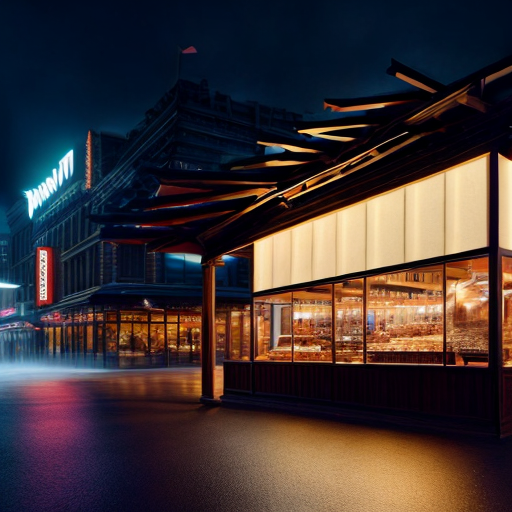The Rise of Restaurant Chains: Understanding the Concept
The rise of restaurant chains can be attributed to several key elements that define what makes a restaurant a chain. These elements include a consistent menu and dining experience across multiple locations, standardized operating procedures and branding, as well as centralized management and supply chain systems. By understanding these concepts, restaurant chains are able to scale their operations and maintain a strong presence in the competitive food industry. Ultimately, the success of a restaurant chain lies in its ability to deliver a reliable and familiar dining experience to customers, no matter where they are located.
The Key Characteristics of a Chain Restaurant: Unveiling the Common Traits
An interesting fact about what makes a restaurant a chain is that the term 'chain' actually refers to the replication of a restaurant's brand, menu, and overall concept across multiple locations. This means that a chain restaurant is not just a single establishment, but rather a network of restaurants that share the same name, design, menu items, and often even the same operational procedures. This replication allows customers to have a consistent experience regardless of which location they visit, making chains popular for their reliability and familiarity.
The key characteristics of a chain restaurant lie in its ability to replicate its brand and offerings across multiple locations, ensuring consistency in quality and service. These restaurants often have a recognizable logo, decor, and menu that customers can expect to find at any of their branches. Additionally, chain restaurants typically have a centralized management structure, with headquarters overseeing operations, marketing, and menu development for all locations. By adhering to these common traits, chain restaurants can build a strong brand identity and attract a loyal customer base.
The Benefits and Challenges of Operating a Chain Restaurant

Operating a chain restaurant comes with a set of benefits and challenges that restaurant owners must navigate. One of the main advantages of running a chain restaurant is the ability to leverage a well-established brand and proven business model. By offering a consistent dining experience across multiple locations, chain restaurants can build a loyal customer base and benefit from economies of scale. This can lead to increased brand recognition, higher customer trust, and ultimately, higher profits. Additionally, chain restaurants often have access to centralized resources and support, such as marketing, training, and supply chain management, which can help streamline operations and drive efficiency.
However, operating a chain restaurant also presents its own set of challenges. One of the main difficulties is maintaining quality and consistency across all locations. As a restaurant expands, ensuring that each branch delivers the same level of service, food quality, and overall experience can be a complex task. This requires strong operational systems, training programs, and quality control measures to be in place. Another challenge is managing the growth and scalability of the business. Rapid expansion can strain resources, lead to increased overhead costs, and dilute the brand if not executed carefully. Balancing growth with maintaining quality and customer satisfaction is a delicate tightrope that chain restaurant owners must walk.
Furthermore, competition in the restaurant industry is fierce, and chain restaurants must constantly innovate and adapt to stay ahead. Keeping up with changing consumer preferences, food trends, and technological advancements can be a challenge for chain restaurants, especially as they grow in size and scale. Additionally, external factors such as economic downturns, shifts in consumer behavior, and regulatory changes can impact the success of chain restaurants. Navigating these challenges requires strategic planning, flexibility, and a deep understanding of the market and industry trends. Despite the obstacles, successful chain restaurants that can overcome these challenges stand to reap the rewards of a strong brand, loyal customer base, and sustainable growth in the competitive food industry.
Exploring the Impact of Chain Restaurants on the Culinary Landscape
A fun fact about what makes a restaurant a chain is that the term 'chain' actually originated from the practice of chaining the pens to the counters in early 19th-century London coffeehouses. This was done to prevent customers from stealing the pens, as they were expensive and valuable at the time. Over time, the term 'chain' expanded to refer to multiple locations of a restaurant or business, symbolizing the interconnectedness and replication of the brand. So, next time you visit a chain restaurant, remember its humble origins in preventing pen theft!
Chain restaurants have had a significant impact on the culinary landscape, shaping the way people dine out and influencing food trends. By offering consistent dining experiences and familiar menus, chain restaurants have introduced a level of convenience and accessibility to dining that has resonated with consumers. Additionally, the growth of chain restaurants has led to increased competition in the industry, pushing independent restaurants to innovate and differentiate themselves to stand out. While some critics argue that chain restaurants can homogenize the dining experience, others appreciate the reliability and affordability that they provide. Overall, chain restaurants have become a staple in the culinary world, playing a key role in shaping the way people eat out and influencing the broader food culture.

